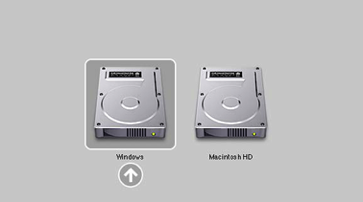An important application in your maintenance toolbox is the Disk Utility, which is located in the Utilities folder within your Applications folder. When you first run this program, it looks something like Figure 1, displaying all the physical disks and volumes on your system.
Recover disk space by finding and removing large useless files. Featured in the “Essentials”, “Best of Mac App Store” in 2015, 2013 and 2011, “Get Productive”, “Get Stuff Done” and “Invaluable Utilities” editorials of the Mac App Store.
Figure 1: The familiar face of Tiger’s Disk Utility.
- DaisyDisk, chosen by Apple as a Mac App Store ‘essential’, provides a cleaner and more interactive circular interface for visualizing Mac’s hard drive. 9to5mac For only ten bucks, DaisyDisk is a simple, convenient utility for every Mac owner, and it gets the job done well for less technically-inclined users.
- Repair a storage device in Disk Utility on Mac. Disk Utility can fix certain disk problems—for example, multiple apps quit unexpectedly, a file is corrupted, an external device doesn’t work properly, or your computer won’t start up. Disk Utility can’t detect or repair all problems that a disk may have.
- The free Yandex.Disk app can be depended on to save and sync all your files, photos and documents between your computer, phone, and tablet. Download Yandex.Disk for Windows, Android, iPhone, iPad, Mac OS, Linux, or Windows Phone.
- From seeing the Mac disks mounted to your computer to activating and deactivating, everything from top-to-bottom is easier. MacDrive 10 features an all-new Disk Management Window that displays any Mac disk mounted to your PC and gives you quick access to all of MacDrive’s features.
The Disk Utility application has its own toolbar that you can toggle on and off. Click the lozenge-shaped button at the upper-right corner of the window to display or hide the toolbar.
Displaying the goods on your disks
The volume tree structure on the left of the Disk Utility window lists both the physical disks and the partitions that you’ve set up. A partition is nothing more than another word for volume, which is the formatted section of a disk that contains data. A single physical hard drive can contain several partitions. The information display at the bottom of the Disk Utility window contains data about both the volumes and the partitions on your hard drive.

To illustrate: Clicking a drive labeled at the top of the tree displays a description of the drive itself, including its total capacity, interface (connection type), and whether the drive is internal or external, as shown in Figure 2.
Figure 2: Display data on a physical drive.
Clicking the tree entry for a partition, however, displays information about the type of formatting, the total capacity of the partition and how much of that is used, and the number of files and folders stored on the partition (see Figure 3).
Figure 3: Display data on a volume.
Playing doctor with First Aid
Format Mac Disk For Pc
From the First Aid pane, Disk Utility can be used to verify (or check) any disk (well, almost any disk) for errors, as well as repair any errors that it finds. Here are the two exceptions when the buttons are disabled:
- The start-up disk: Disk Utility can’t verify or repair the start-up disk — that’s Mac talk for the boot drive that contains the Mac OS X system that you’re using at the moment — which makes sense if you think about it because that drive is currently being used!
- If you have multiple operating systems on multiple disks, you can boot from another Mac OS X installation on another drive to check your current start-up disk. Or, you can boot your system from the original Mac OS X installation CD and run Disk Utility from the Installation menu.
- Your start-up disk is automatically verified and repaired (if necessary) during the boot procedure, so you really don’t need to worry about checking the start-up disk.
- Write-protected disks: Although you can use the Disk Utility to verify CDs, DVDs, and write-protected removable disk drives (like a write-protected Zip disk), it can’t repair them.

- You also can’t repair a disk that has open files that are currently being used. If you’re running an application from a drive or you’ve opened a document that’s stored on that drive, you won’t be able to repair that drive.
You can also elect to verify and repair permissions (also called privileges) on a disk; these are the read/write. If you can’t save or move a file that you should be able to access, check that drive for permissions problems. Unlike fixing disk errors, you can verify and repair permissions on any volume that contains a Mac OS X installation (whether it was used to boot your Mac or not).
In order to verify or repair, you must be logged in as an admin-level user.
To verify or repair a drive, first select the target volume/partition in the list at the left. To check the contents of the drive and display any errors, click the Verify Disk button. Or, to verify the contents of the drive and fix any problems, click the Repair Disk button. Disk Utility displays any status or error messages in the scrolling list; if you’ve got eagle eyes, you’ll note that the window can be resized so that you can expand it to display more messages. (You can also drag the dot between the left and right panes to expand the list.)
Http Disk For Mac Catalina
Check your disks once every two or three days. If your Mac is caught by a power failure or Mac OS X locks up, however, it’s a good idea to immediately check disks after you restart your Mac. (Don’t forget that the start-up volume is automatically checked and repaired, if necessary.)
